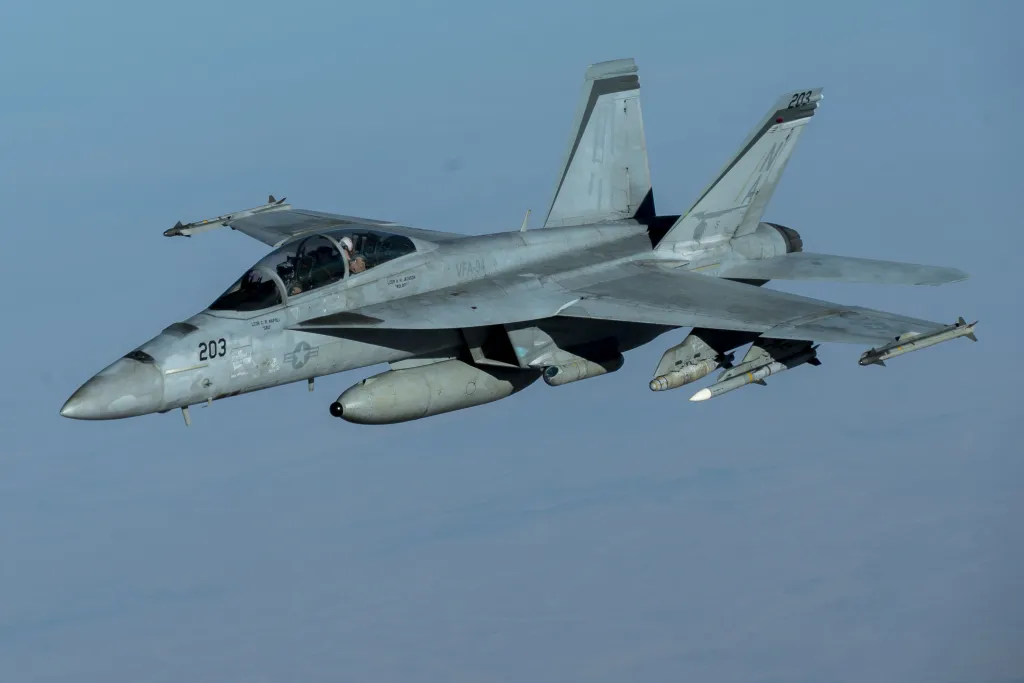As the U.S. continues to raise the heat on Venezuelan dictator Nicolas Maduro, online flight trackers tonight have noticed several F/A-18 Super Hornets and a U.S. Air Force RC-135V Rivet Joint electronic surveillance plane flying close to the South American nation’s coastline. A U.S. official told us these flights are part of the pressure campaign ordered by U.S. President Donald Trump against Maduro and specifically to test Venezuela’s air defense capabilities and response times. This is a staple tactic that is critical to assessing the status, locations, operating procedures, and sensitivity of an enemy’s defenses. The data garnered is especially critical for planning offensive operations.
You can catch up with our most recent coverage about what has been dubbed Operation Southern Spear in our story here.
“They are normal operational training flights from the aircraft carrier USS Ford and platforms performing training exercises,” the official told us. “They are also testing Venezuelan sensors and responses, and it is part of the pressure campaign to show U.S. capabilities in the Caribbean.”
In addition to the Super Hornets and Rivet Joint, spotters also tracked B-52H Superfortress bombers in the region as well. The flight is the latest in a series of bomber sorties that have been flying near Venezuela since October 15.
“For operational security reasons, we do not comment on the movement of aircraft supporting ongoing operations,” an Air Force Southern Command spokesperson told us earlier today when we asked about the flights. “We refer you to the…press release for information about Operation Southern Spear and the Joint Task Force established to conduct the operation.”
The flights are part of a massive U.S. presence in the Caribbean for an operation that was ostensibly launched to counter the flow of narcotics into the U.S. but has morphed into a huge show of force aimed at Maduro. In addition to the Ford, there are at least seven surface combatants, a special operations mothership, and several support vessels. There are also F-35B stealth fighters, MQ-9 Reaper drones, P-8 wartime patrol aircraft, AC-130 Ghostrider gunships, P-8 maritime patrol aircraft, among other assets, and about 15,000 U.S. personnel deployed to the region.
Thursday evening, U.S. Defense Secretary Pete Hegseth told OAN news that the looming designation of Cartel de los Soles as a Foreign Terrorist Organization, alleged to be headed by Maduro, “brings a whole bunch of new options to the United States.” That designation goes into effect on Nov. 24 unless challenged by Congress.
RC-135 Rivet Joints are no strangers to this part of the world, as we have written about in-depth before. But the aircraft’s arrival at this time, along with tactical fighters and bombers, and many other aircraft that do not show up on tracking systems, is of great interest. The fact that some of these aircraft are showing up on tracking sites at all is clearly a conscious choice in messaging. Even more so, the fact that a U.S. official confirmed the aircraft were stimulating Venezuelan defenses in order to gather critical intelligence is also a very rare admission. Such activities go back many years and happen around the globe regularly to this day to varying degrees of sophistication. But this appears to be a more complex operation, especially considering Venezuela is on high alert for an impending military operation. It’s worth noting that the RC-135 would also have had fighter cover for its collection mission, which could have been provided by USS Gerald R. Ford’s Super Hornets.
By gathering this type of intelligence, and the RC-135 is arguably the best asset on earth to do it, commanders have an up-to-date assessment of the enemy’s electronic order of battle. Once again, this includes the status, types, geolocations, tactics, and readiness of these systems. That intelligence is critical for planning strikes as it informs what air defenses need to be suppressed or destroyed in order for missiles and/or aircraft to best make it to their targets. It also directly dictates what routes those missiles and/or aircraft would take.
At this time, we have no indication that this is all prelude to an actual offensive military operation that strikes into Venezuela, but it is certainly one indicator. And that may very well be the point, as it puts extreme pressure on Maduro, signaling that his reality could shift dramatically in the coming days.
For both tactical and psychological operations reasons, it won’t be surprising if the RC-135 and its fighter escorts and ‘stimulators’ don’t become a relatively common sight off the Venezuelan coast over the coming days.
Contact the author: howard@thewarzone.com
